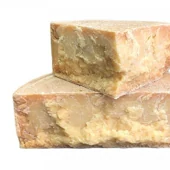Caesar salad: a hundred years of popularity
One salad on the menus of many restaurants on the Costa del Sol is 100 years old this year. There are legends about its origins that completely rule out the connection with Julius Caesar that many believe
Alekk M. Saanders
Monday, 18 November 2024, 15:17
Many think the Caesar salad originates from Rome and is named after the legendary emperor Julius, but that is actually just a popular myth, or rather one of several myths.
The Italian Mediterranean influence is, however, evident. It is believed that the salad was created by an Italian migrant who owned restaurants in Mexico and the United States in the first half of the last century. The restaurateur's name was Cesare (Caesar) Cardini, and this fact explains the salad's name.
From the past
Indeed, the story goes that Cardini lived in California and ran Caesar’s restaurant in San Diego. However, he began losing customers during The Prohibition Era, lasting from 1920 to 1933 when the production, importation, transportation, and sale of alcoholic beverages were banned in the USA. So, to circumvent restrictions and avoid bankruptcy, he moved Caesar's 30 kilometres from San Diego to the Mexican city of Tijuana. The move benefited the restaurateur as he was able to attract customers from both sides of the border, including, as some sources mention, Charles Chaplin, who was rumoured to go to Tijuana for a drink or two.
During the Independence Day rush in July 1924, kitchen supplies were depleted, and Caesar Cardini made do with what he had - romaine lettuce, chicken, egg, croutons, Parmesan and Worcestershire sauce
The occasion for this year's 100th anniversary of the salad was prompted by Caesar's daughter, Rosa, who once revealed that her father had invented the salad in 1924. She said that during the Independence Day rush in July 1924, kitchen supplies were depleted, and since it was a weekend, not many shops were open to stock up on the necessary ingredients. Cardini made do with what he had - romaine lettuce, chicken, egg, croutons, Parmesan and Worcestershire sauce. So, by improvising, he created a dish that delighted his customers and that continued to be a success even when the ingredients for a traditional salad were available again.
Other stories say that the salad was made by Alessandro Cardini, Caesar Cardini's brother, and that it used to be called ‘Aviator's Salad’ because it was made for aviators travelling during the ‘Dry Period’. Moreover, several of Cardini's employees later also claimed that they were the ones who invented the dish.
Incidentally, in many places in the United States you can still read that Caesar salad was born in the kitchen of New York's Waldof Astoria restaurant, while others claim that the famous salad originated in a mafia casino in Atlantic City.
To the present
They say in Andalucía that any time of the year is good for a refreshing salad. Just as the Caesar salad has several spellings, including the most ‘official’ Cesar, César, and Cesare, its recipe also varies widely. Even its chicken version doesn't adhere to a single recipe. Frequently, restaurants in Andalucia offer the salad with roast chicken, with crispy chicken in batter or with a little chicken breast marinated in paprika. However, all chefs emphasise that the secret of the delicious dish is in the creamy sauce with a slight note of anchovies and mustard.
Frequently, restaurants in Andalucía offer the salad with roast chicken, with crispy chicken in batter or with a little chicken breast marinated in paprika
In fact, the original recipe calls for Worcestershire sauce, which can be considered the ‘indirect’ British contribution to the famous salad. This fermented liquid condiment was invented by pharmacists John Wheeley Lea and William Henry Perrins in Worcester, during the first half of the 19th century. Worcestershire sauce was used directly as a condiment for steaks, hamburgers, and other prepared foods, as well as for flavouring cocktails. A century ago, Caesar Cardini used the sauce to dress his spontaneous salad.
In fact, the original recipe calls for Worcestershire sauce, which can be considered the ‘indirect’ British contribution to the famous salad
Nowadays, many different ingredients are used in preparing a salad presented as Caesar’s. However, the base of the green salad is romaine lettuce. Many Costa del Sol restaurants use local lettuce. It turns out that about 33,000 hectares of lettuce are grown in Spain, of which about a third is devoted to romaine lettuce. Along with Toledo, Barcelona and Murcia, Malaga is the main producer of romaine lettuce. It is good to know because choosing local products benefits the environment and the country's economy. Even the cheese - Parmesan (the officially named Parmigiano Reggiano) - can easily be substituted with others produced in Spain.

Even the cheese - Parmesan (the officially named Parmigiano Reggiano) - can easily be substituted with others produced in Spain
For example, Galmesano... This Galician cheese has almost the same name and flavour as Parmigiano. It is made in the same way as its Italian counterpart in the Alps: from cow's milk with a long maturation period of 14 months. It has a sweet, nutty, caramel flavour and a grainy texture.
Mahón cheese from the island of Menorca has an aged and firmer version produced by Son Mercer de Baix. This cow cheese may surprise you with its slightly sour flavour, salty and spicy background and those crystals for which we love Parmesan so much.
Even Manchego cheese, best known to foreigners, can be used to make a Caesar salad. Yes, it is made from sheep's milk, but a very mature Manchego - Añejo - gives you what you expect from any Caesar salad.
